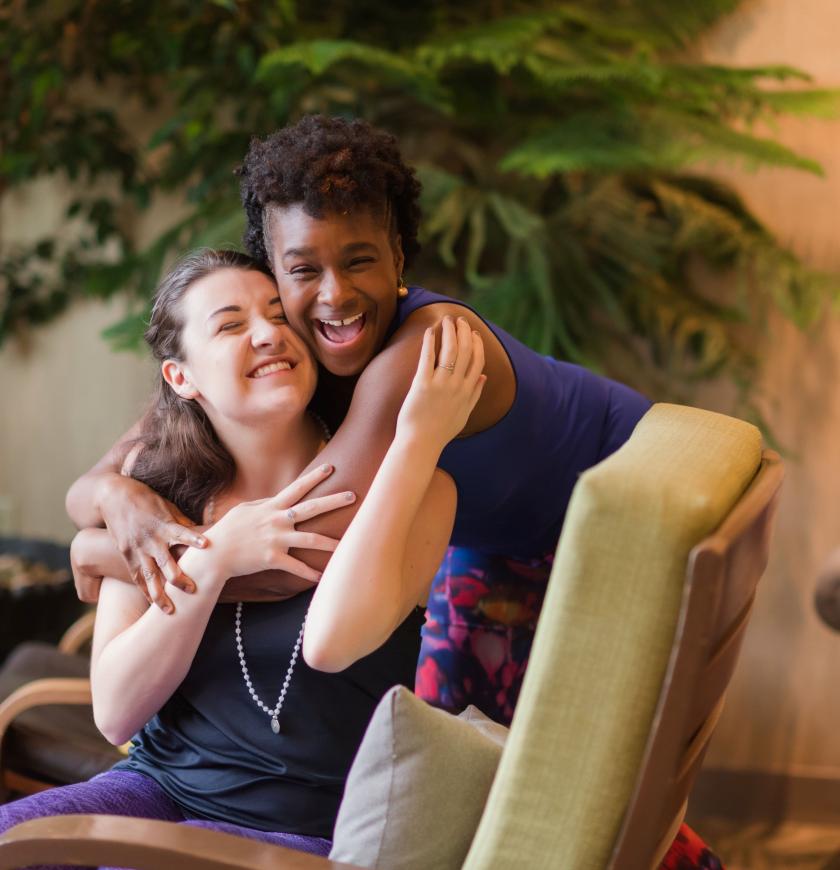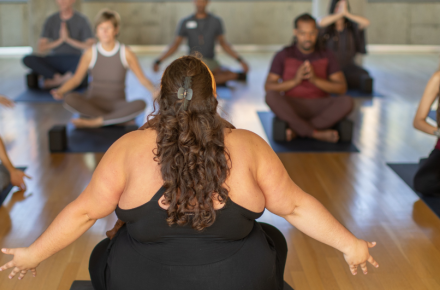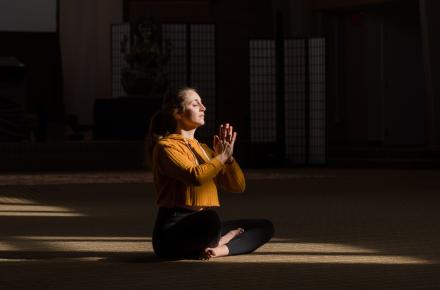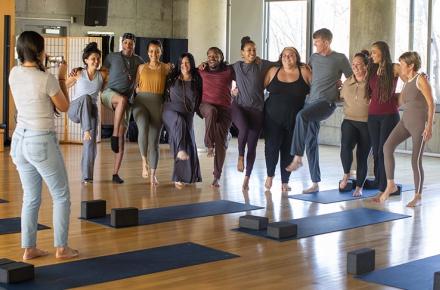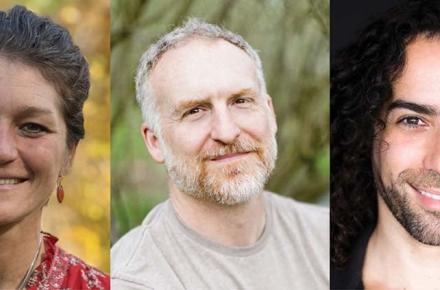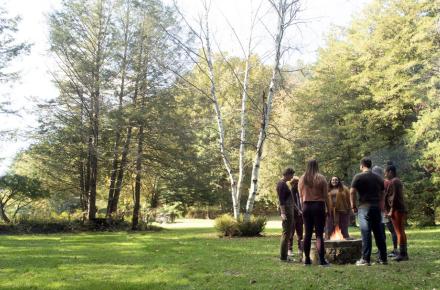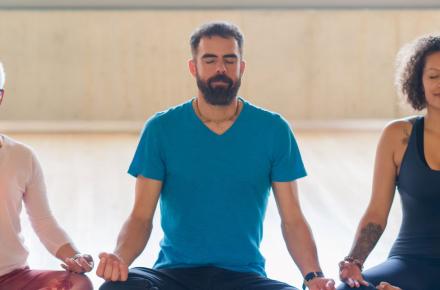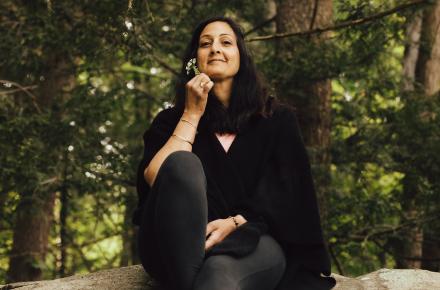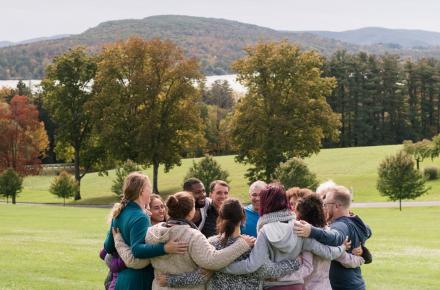Hardwired for Empathy: How Mirror Neurons Connect Us

As a yoga teacher, I’ve learned that each group of students I teach has a particular energy. Some classes hum with excitement, others with restlessness. One group might seem fatigued, while, with others, I feel a palpable sense of judgment in the room. I begin to take these different energies into myself—it’s as if the quality of the air I’m breathing changes. Perhaps you’ve noticed times when you’ve walked into a room and felt an intangible something, or sat down with someone and immediately picked up a “vibe” from them.
As humans, we have an innate capacity to understand what another person is feeling simply by being present with them. We are hardwired for empathic attunement to each other, at a neurological level. We have neurons in our brains, called mirror neurons, that help support this process—and, perhaps not surprisingly, they are positively impacted by yoga and meditation practice.
In 1980, Dr. Giacomo Rizzolatti of the University of Parma, Italy, who was studying monkeys and their brains, found something interesting. Curious about whether monkeys could attune to and learn from each other, he began to measure their brain activity while one engaged in a task and the other watched. Would the observing monkey learn from the other monkey?
What he discovered would forever change the way scientists understand not just monkeys’ brains, but our own brains as well. He found that when one monkey engaged in an activity—in this case, eating a peanut—the other monkey’s brain fired in the exact same way. It was as if both monkeys were eating the peanut, instead of one eating and one observing. Through attention, their brains linked. Quickly researchers began to extrapolate: Could this apply to humans? And how? A study with humans proved that, when one person was touched by a feather and the other person watched, both brains lit up as if both people were feeling the touch of the feather. These mirror neurons give us a scientific understanding of why we feel attunement and empathy, and how we share our experiences collectively.
A Biological Expression of Oneness
Researchers from Princeton University found that this innate ability to really “get” someone’s experience also applied to listening to people’s stories and empathizing with them. They discovered this outcome when they scanned people’s brains while they listened to a voice tell an interesting story; they had previously scanned the speaker’s brain in order to know which parts lit up when they told the story.
What they found gives neuroscientific merit to the yogic claim of oneness. With attention, the listeners’ brains first began to fire in the same places as the speaker’s—as if the listeners were telling the story with a short delay. Gradually, the delay disappeared—their brains fired together. And, over time, the listeners’ brains actually began to predict how the speaker’s brain would fire. The listeners’ brains lit up nanoseconds before the speaker’s brain activated in exactly the same way.
Essential to this process was the listener’s ability to stay present and focused on the other person’s voice. Less presence and attention diluted the effects of brain synchrony, which makes perfect sense. It’s harder to pick up on someone else’s state of being when our minds are scattered.
Yoga and Mindfulness Increase Attunement and Empathy
These findings highlight the role of attentiveness in empathy. It makes perfect sense that brains synch more easily when the listener pays more attention—in order to know someone fully, we have to be present with them. Listening deeply and attuning to each other requires a willingness to absorb our attention in the other person’s words, expression, vocal tone, and body posture.
Psychologist Daniel Goleman writes, “The act of compassion begins with full attention, just as rapport does. You have to really see the person. If you see the person, then naturally, empathy arises. If you tune into the other person, you feel with them. If empathy arises, and if that person is in dire need, then empathic concern can come. You want to help them, and then that begins a compassionate act. So I’d say that compassion begins with attention.” Without attention and without mirror neurons, our capacity to empathize and to know each other is limited.
Yoga and mindfulness practice foster greater connection because of their focus on cultivating attention. By training the mind to stay focused on what’s happening in the moment—whether it’s your internal experience or another person’s experience—we build our capacity for empathy. Through attention, we let our mirror neurons be fully expressed, and this allows our brains to synch up with another’s experience.
While there are no studies to date that look specifically at the impact of yoga or meditation on mirror neurons, there is a growing amount of research that infers that these practices might enhance their functioning. One study found that Jon Kabat-Zinn’s eight-week Mindfulness-Based Stress Reduction (MBSR) program significantly increased empathy in medical students; another study concluded that MBSR training increased self-compassion in healthcare professionals. Mindfulness training was also shown to increase self-compassion in counseling psychology students—which led to declines in stress and negative emotion and increases in positive emotion.
Thich Nhat Hanh writes, “The most precious gift we can offer others is our presence. When mindfulness embraces those we love, they will bloom like flowers.” Now we understand that practicing this presence allows the brain to unfold its natural ability to temporarily synch with another—fostering intimacy in ways that ultimately will benefit us all.
© Kripalu Center for Yoga & Health. All rights reserved. To request permission to reprint, please e-mail editor@kripalu.org.




